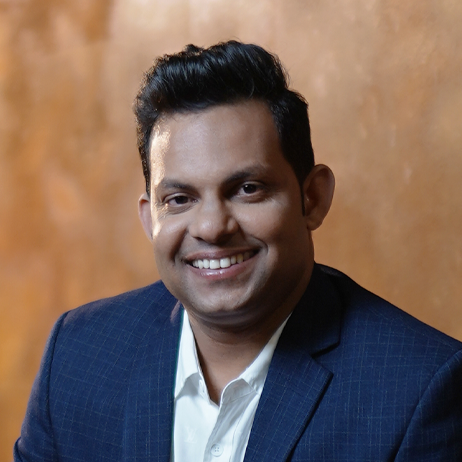
Leading a peaceful retirement life is often a distant dream for many middle-class Indians. As many of them live from paycheck-to-paycheck, a peaceful retirement life with necessary savings is a mere dream. With rising healthcare costs, living expenses, and more, effective retirement planning in India is no longer an option but a necessity.
So, is it possible to retire with 1 crore? If yes, how to retire with 1 crore in India? Although not guaranteed, disciplined saving and smart investment options, utilising tools like SIP in mutual funds, PPF, or NPS, can help even professionals build a solid retirement corpus through compounding.
In this article, let us have a detailed discussion on this topic. Let’s analyse some practical methods that help achieve the 1 crore milestone, financial habits that make the 1 crore retirement strategy achievable, and some common mistakes to avoid in this journey. So, let’s get started.
Before deciding on your retirement investment plan, it’s important to assess your current financial status. Calculate your net worth, including your income, loans, debts, and investments like FDs, mutual funds, stocks, and more. This will help you gain a broader understanding of your financial status and build your retirement corpus accordingly.
Next comes the risk management. Along with net worth, assess your risk management and align your asset allocation based on it. Normally, the risk profile is divided into:
Furthermore, use a retirement calculator or SIP calculator to see how your investments might grow in the coming years, as it would help decide the necessary monthly contributions to reach your retirement goals.
However, remember, it is important that you improve your financial knowledge before entering the world of investments. Today, you have various resources for this, which include platforms like FinQuo Versity, courses through which you can study mutual funds and other investments, expert classes, webinars, and more.
So, conduct thorough research on these resources and choose the one that suits you the best, as proper financial education is essential before making investment choices.
As most of you might know, planning and investing early for retirement has many advantages to offer. From a relaxed retirement life to financial stability and independence, even without a monthly salary, retirement investments are essential for individuals.
How much do you plan to save for your retirement? Do you think you can make it up to 1 crore? Building a 1 crore retirement fund might feel impossible to achieve. However, with mindful decisions, the right approach, and discipline, you can also achieve this goal.
In this section, let us discuss two major methods suggested by a financial expert and popular finance YouTuber, Nikhil. While one method includes a lower risk compared to others, the other one has a high risk. So, go through this discussion keenly, as it helps you decide which method suits you the best.
At first, let us discuss the SIP for retirement planning in India. Utilising the SIPs or mutual funds is one of the most disciplined and achievable methods to build a 1 crore retirement corpus for most Indians. This method mainly focuses on long-term investing, behavioural consistency, and the power of compounding.
By investing a fixed amount regularly through a Systematic Investment Plan (SIP), you benefit from rupee-cost averaging and market compounding over time. A well-chosen mutual fund portfolio, balanced across equity, debt, and hybrid funds, can generate consistent returns when held for 20–30 years, helping you accumulate significant wealth with manageable risk.
For example, consider investing 5000 rupees every month in SIP with a minimum interest of 12%. Although the 12% returns cannot be guaranteed, as they change with market trends and volatility, the previous records suggest that there is a potential for 12% or more interest.
In such a case, investors can reach almost near the goal of 1 crore in retirement funds with almost 25 years of investing 5000 rupees each month regularly. Moreover, increasing the investment percentage by at least 10% every year would benefit more, as the investors can achieve this goal faster.
Disclaimer: The data and calculations used in this example are not exact or guaranteed. The actual returns may vary depending on market conditions.
However, the major concern shown by investors is the long-term commitment to these investments. People often tend to break the investments once they reach a sum of 25 lakhs or more. So, the key factors for success using this method are:
The next is a riskier method, which has the potential to offer high rewards by investing in the stock market. Although this method possesses higher risks, it also has the potential to offer more returns, as the investments are not made through mutual funds or SIPs but directly to the stocks of one or more businesses, offering a share of the business.
So, the first thing before investing in the stock market is to identify a reliable business or businesses of your choice. For that, you have to identify a share that has been performing well for the past few years.
You should also analyse the potential performance of the business in the coming years, ensuring that the business will survive at least for the coming 20-25 years. Furthermore, ensure that the business has reliable promoters. Check whether it has a single entity or a group of entities backing it.
Once you select the business, start investing at least 5-10% of your income to buy its shares regularly. Remember, the money allocated for this purpose should not be used for any other goals or needs in life.
So, through this method, you should invest regularly in chosen businesses and grow wealth over time through dividends and capital appreciation while maintaining diversification.
Moreover, try not to diversify your portfolio greatly. Diversifying helps reduce risks; however, limit it to a maximum of 5 businesses, as over-diversification might not be beneficial at times.
While investing in strong companies can yield high returns, predicting performance over 20–25 years is challenging. Diversification across sectors and regular portfolio review are crucial to manage risks.
Moreover, this is a riskier option, as the market can be highly volatile, leading to great returns or great losses.
Here is a quick look at the things you should consider:
Finally, following the high-risk method might not be ideal for beginners. The lower-risk method of investing in SIPs and mutual funds would be more recommendable for most beginners.
Having a 1 crore investment is often considered rich in India. Even though it is mostly possible for businessmen and well-settled professionals, common people can also try to achieve this milestone.
Building 1 crore by retirement is as much about behaviour and habit as it is about investment choices and tools. Along with choosing suitable investment vehicles and strategies, following efficient financial habits can help accelerate your journey towards your retirement goals and financial independence, even in the face of a steady inflation rate and rising living costs in India.
So, before starting your retirement planning in India, let us detail some financial habits that can help you reach your goal of 1 crore investments by retirement faster.
No matter how well you plan your retirement savings, you might fail if you make some common mistakes. Not only do these mistakes slow down your retirement savings, but they might also affect achieving your financial independence at your desired retirement age.
Some of these common yet major mistakes are:
Breaking your SIP or withdrawing your mutual funds before completing their tenure can reduce their compounding power and often disrupts the potential CAGR (Compound Annual Growth Rate). So, discipline and consistency are essential for long-term investments.
Many people tend to follow short-term market trends or hyped volatile sectors. These people try chasing returns. However, instead of chasing returns, focusing on maintaining a stable asset allocation across diverse investment vehicles like equity mutual funds, debt mutual funds, and index funds is essential for sustainable growth.
Inflation is not a far-seen thing in India. The rising inflation rate can directly affect your retirement corpus and monthly expenses after retirement. So, it is important to aim for inflation-adjusted returns while saving for retirement.
With 5–6% inflation, 1 crore today may have the purchasing power of around ₹25–30 lakh in 25 years, so planning should account for inflation-adjusted returns. Although the value might decrease in the future, having a 1 crore investment can help make surviving retirement life easier.
Although fixed deposits offer more stability and safety compared to other investment tools, they alone might not be able to beat inflation in the future. So, balancing your savings and diversifying them with PPF, NPS, mutual funds, SIPs, or more can help achieve higher long-term growth.
Unplanned healthcare costs or emergencies can derail your retirement income strategy. Maintain an adequate emergency fund and medical insurance to protect your investments.
Some of these insurances and funds include:
Retirement with 1 crore in India isn’t about luck, but it’s about planning, consistency, and patience. Whether you choose the steady SIP route through mutual funds or the high-risk path of direct stock investments, the key is to start early, invest regularly, and stay disciplined.
Over time, the power of compounding, combined with smart asset allocation and controlled emotions, can transform small monthly investments into a significant retirement corpus.
Remember, markets will fluctuate, but your commitment to the goal should not. By focusing on long-term growth, financial discipline, and realistic expectations, you can confidently build the financial cushion needed to enjoy a stress-free and independent retirement.
Uma Nair is a professional content writer with over 3 years of experience and a strong foundation in crafting engaging and informative content across diverse domains. Over the years, she has dealt with various niches, and her growing interest in finance has led her to explore the world of financial writing. As an English Language and Literature postgraduate, her educational background supports her ability to convey complex topics in easy and accessible content. In her free time, she stays updated on industry trends to continually enhance the value of her content.

Reviewed by
Ibnujala is a seasoned financial expert of Indian and Middle Eastern markets with an experience of over 15 years. His deep interest in neuroscience fuels his research in seamlessly blending finance and science. With a bachelor’s degree in law from India and an MBA from the UK, his diverse academic background makes him an expert in financial management and mentorship. In addition to being a seasoned investor and serial entrepreneur, he currently serves as the CEO of Finquo Versity.
Disclaimer: The information provided in this blog is for educational and informational purposes only and should not be considered as financial or investment advice. Stock market investments are subject to market risks, and past performance is not indicative of future results. Readers are encouraged to do their own research and consult with a licensed financial advisor before making any investment decisions. The author and publisher are not liable for any financial losses or damages incurred from following the information provided in this blog.

Uma Nair
